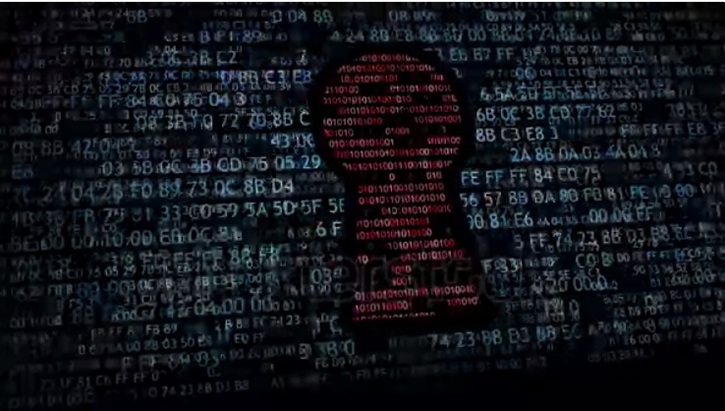Hack Proof: Cybersecurity & Smart Buildings

It was January 2017 during a busy tourist season in Austria, and the Romantik Seehotel Jaegerwirt was filled with guests. Ready to ski and sightsee, some travelers had paid more than $500 a night for the alpine lodging. When multiple guests began complaining that their key cards could not unlock their rooms, hotel staff tried in vain to remedy the problem, but they were frozen out of their own computer system. Then the ransom email arrived.
Sent to the hotel's managing director, the note demanded about $1,800-worth of bitcoin if the hotel would like to regain access to their system. The note ended with a friendly, "Have a nice day," news sources reported at the time. If not paid soon, hackers indicated that the ransom amount would be doubled. With the full house of guests to consider, the hotel complied and paid the hackers.
The Austrian hotel incident is one of many that highlights new considerations property managers must take as buildings and their features get smarter and more connected. Anywhere there is automation, there is risk, and with the growing popularity of IoT (Internet of Things) in real estate and smart buildings, property managers need to be prepared for all of the threats that come with the convenience and simplicity.
POINTS OF ATTACK
 David Peterson, the director of smart properties at the Maryland-based Blackpoint Cyber and a 25-year commercial real estate veteran, explains that adding automation like climate controls, security systems or timed lights comes with additional potential "attack surfaces."
David Peterson, the director of smart properties at the Maryland-based Blackpoint Cyber and a 25-year commercial real estate veteran, explains that adding automation like climate controls, security systems or timed lights comes with additional potential "attack surfaces."
"These devices typically rely on an IP-based communication system—much like on a PC—and these can be vulnerable to malicious hackers," Peterson says. "It could be a building automation system, an unsecured maintenance portal, a CCTV or a security system, or even an individual laptop, and if there's a weak point, attackers can get in."
Peterson says the most common method hackers use to quickly bring down a network is called "lateral spread," and it's one that you probably have already seen attempted. "It starts with a well-worded email to the right individual, coercing that person to inadvertently give up their credentials or click on a link; if this succeeds, the hacker is now in the network where they will perform reconnaissance to gain access to privileged accounts and high-value targets and eventually spread their malware," Peterson says.
 Jim Young, co-founder and CEO of San Diego-based Realcomm Conference Group, says hackers are looking for easy points of access, and every new piece of equipment that comes into a building may be a risk, along with anything attached to a modem.
Jim Young, co-founder and CEO of San Diego-based Realcomm Conference Group, says hackers are looking for easy points of access, and every new piece of equipment that comes into a building may be a risk, along with anything attached to a modem.
"There are modems on equipment in the closets of some buildings that nobody even knows about," he says, adding that these devices are fairly simple for a hacker to locate. He says websites like shodan.io, which calls itself "the world’s first search engine for Internet-connected devices," is an easy way for anyone to find the devices that are exposed and vulnerable.
“NEFARIOUS CHARACTERS”
Just like the potential points of attack, the motives of hackers vary wildly. "If it’s a nation-state, they could be looking for disruption or a financial goal," Young says. "It could be disgruntled employees or kids just playing around, saying, 'Let’s turn off the lights.' There are multiple goals, multiple types of people and multiple types of threats." Other possible aims are making the buildings inaccessible, stealing visitor or occupant data or even destroying equipment.
Highlighting the power a hacker can wield, Peterson asks, "If they get into a building with tenants and manipulate the HVAC system, lights or security, what can the staff do?"
Adds Young, "Imagine turning off the heat in Chicago in winter or the air conditioning in L.A. in the summer. Then there’s negative impact on the brand."
To regain control of the building, victims may need to pay a certain amount of money (ransom demands differ) to unlock the system and unencrypt the files. "It could be as easy as cleaning up a desktop or laptop with an anti-virus software, but it may also take a team of experts to unlock. The longer it takes, the more expensive it could be," Peterson says.

Depending on how severe the hack is, it could take days or weeks to gain control and a secure status again, Young says. Both Young and Peterson agree that it all depends on how prepared the building and its managers and owners are.
"You want to disincentivize these nefarious characters," says Peterson.
CYBERSAFE AND SOUND
In this ever-changing tech environment, Peterson encourages property managers to get educated and be prepared. "You have to ask yourself what you would do," he says. "You have to assume a cyberhack is on the horizon."
Questions for property managers to consider include: Does your insurance cover a hack? Who would pay for the damage? What about the damage to your reputation? Whether a smart system is in place or in the plans, these concerns must be addressed.
Rather than trying to navigate cybersecurity alone, Young suggests property managers have the guidance of their organization’s IT experts. "You need to have an IT liaison or partner inside the company to help," he says. Then, with the help of IT (and after making sure that the corporate office does not already have cybersecurity measures in place), property managers can reach out to a cybersecurity expert for a consult.
"There are a lot of impostors in IT, OT and IoT," Young says. "If they don’t have experience with all three, you are going to pay for their learning curve."
Because hackers are looking for easy targets, Peterson says having an expert perform a cyber assessment on your property can be very informative. Without giving any identifying information about his client, Peterson recounted his company’s recent security evaluation of a large North American shopping center. "They wanted us to assess their system, and it was wide open. It literally took our experts 15 minutes to figure it out," he says.
Blackpoint Cyber takes a three-tiered approach in protecting smart buildings through monitoring, detecting and responding to threats, he says. Monitoring involves 24/7 live monitoring of a building’s systems. If something out of the ordinary is detected, Blackpoint determines if it is a nonissue that should be ignored or if it requires action. "If an alert gets escalated to the next level, our team has the ability to make an immediate response, and we will alert your team according to our predetermined action plan that we set up in the onboarding process," Peterson says.
Being educated and safe doesn’t mean you and your building will be completely immune to hackers, "but it will be less likely to happen, and if you're better prepared, it's more likely the building will get back on track," Young says.
REPRINTED FROM THE JOURNAL OF PROPERTY MANAGEMENT, VOL. 84, NO. 4, WITH PERMISSION FROM THE INSTITUTE OF REAL ESTATE MANAGEMENT. FOR MORE INFORMATION ON IREM AND ITS PUBLICATIONS, VISIT WWW.IREM.ORG.
This Week’s Sponsor
Altus Group is a market leader providing software, data solutions and technology-enabled expert services enabling commercial real estate professionals to connect to the market. ARGUS® solutions are the industry standard for creating cash flows and valuations helping thousands of commercial real estate professionals gain transparency into their property assets, manage risk and optimize their portfolios.
Read Next
 5/15/2025
5/15/2025
Tech, Talent and Transformation: 2025 Digie Finalists Announced For 27 years, Realcomm has presented the Digie Awards to acknowledge companies, real estate projects, technologies, and individuals that have advanced the commercial real estate industry through the strategic use of technology, automation, and innovation.
 5/15/2025
5/15/2025
Empowering Space Management with Data-Driven Visualization For effective CRE space management, it’s critical to centralize lease data, maximize rental square footage (RSF), improve energy efficiency and reconfigure spaces to meet changing needs.
 5/8/2025
5/8/2025
The AI-Powered Workplace Evolution: Redefining the Business Landscape In today's rapidly evolving business environment, the fusion of Artificial Intelligence (AI) and Workplace Management is revolutionizing the way organizations approach workspace optimization and operational efficiency.
 3/27/2025
3/27/2025
The Convergence of Edge Computing, Cloud, and AI in Building Automation and Smart Buildings In the built environment, we have seen the convergence of Operational Technology (OT) and Information Technology (IT), later expanding to include Workplace Technologies (WP).



%20(1)%20(1)%20(1).png)







